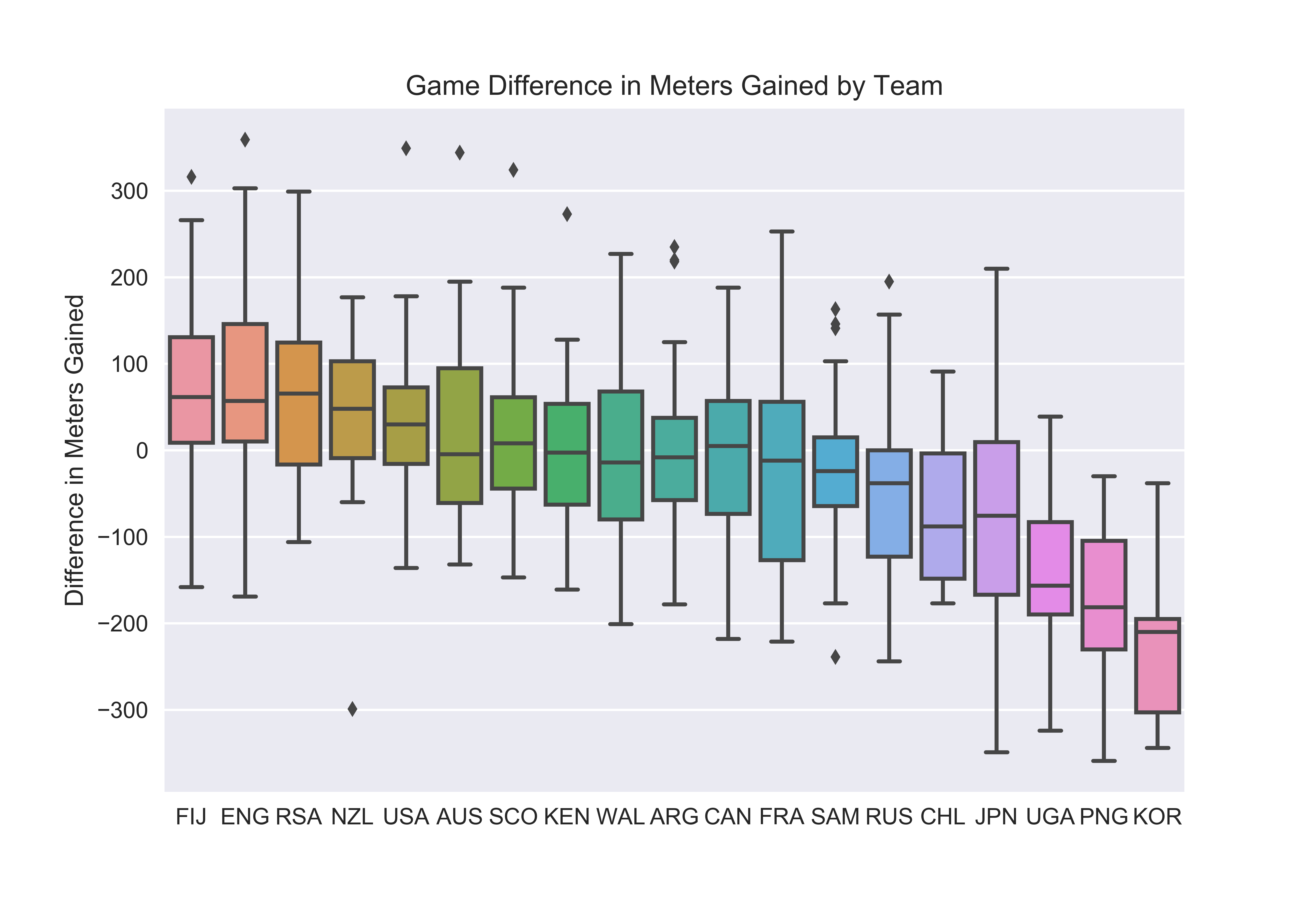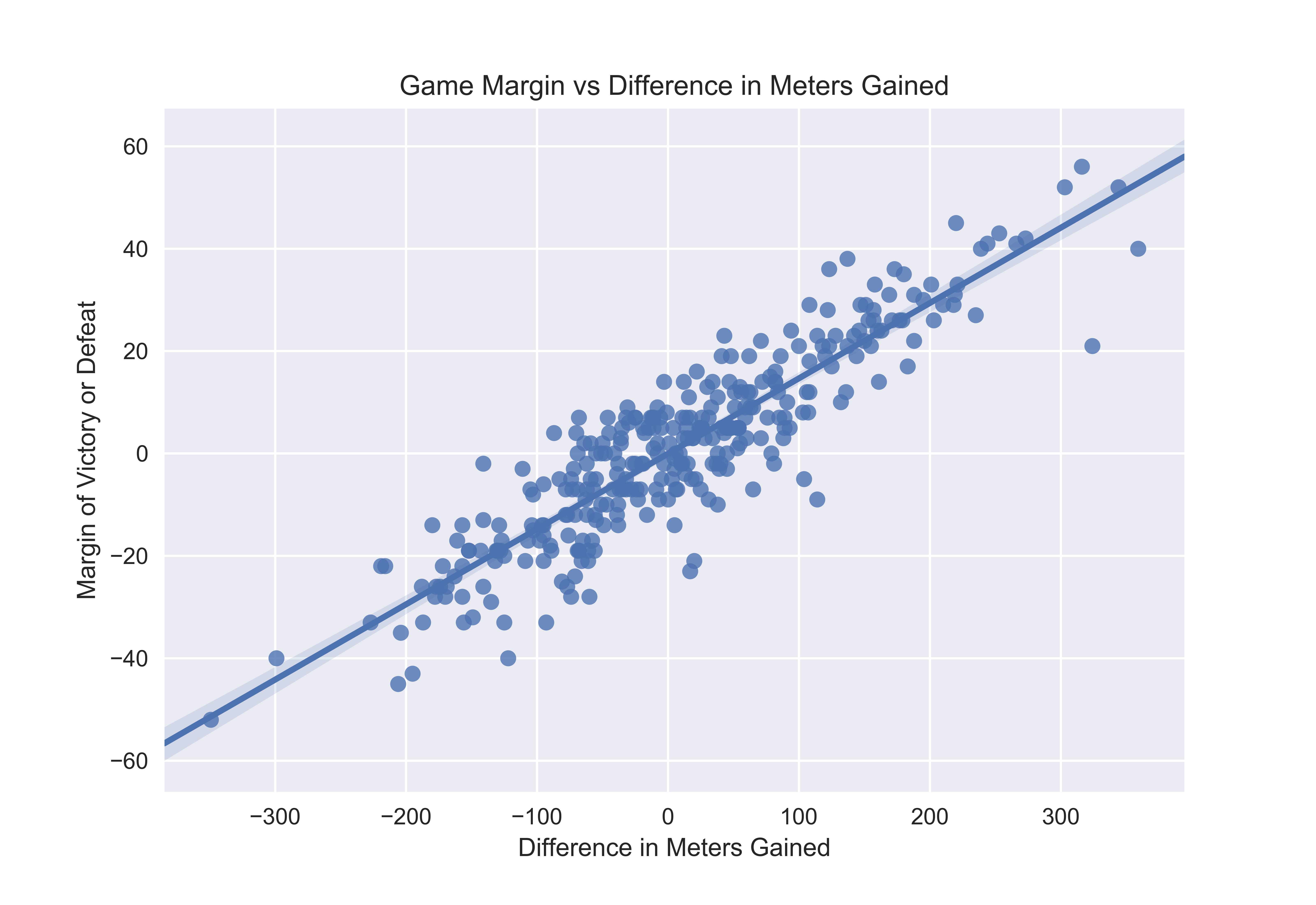Motivation
I’ve been interested in visualizing the relationship between meters gained or conceded and overall team success. My data shows that the best teams gain the most meters and concede the fewest. This makes sense even without the numbers; teams need to move the ball towards the opposition try line to score.
I also was interested in seeing how teams were trending in meters gained and conceded. Do these trends help illustrate personnel or tactical changes within teams? I went ahead and plotted the figure below.

Explanation
There’s a lot going on so I’ll make sure things are clear. First, I’ve created the same plot for each core team with the same scales for easy comparison between teams. I eliminated non-core teams since their low number of games created noisy and truncated graphs. The dots display meters gained (blue) and meters conceded (green) for each game played this year. The lines show the teams’ trends across the games. Games are displayed in chronological order left to right; Dubai is on your left and the most recent games in Hong Kong are on the right. The colored vertical shading represents individual tournaments.
Analysis
Take Russia for example. Their meters conceded in defense (green dots and line) were very poor in Dubai. But they improved and from Sydney on, have mostly remained the same. On the other side of the ball, in attack, they were poor in Dubai as well. But they improved, culminating in a Challenge Trophy victory in Sydney, before dropping off again.
England and Fiji have been notably consistent in their success. Both have maintained what looks to be an average 50-75 meter per game advantage over their opponents. Meanwhile, the series-leading Blitzboks were incredible to start the season, but have seen a consistent increase in meters conceded and more recently, a decline in their meters gained. Their loss of advantage in meters gained and conceded correlates with some of their worst results of the season. In their Hong Kong semi-final they needed overtime to get by the USA before suffering their worst defeat of the year, 22-0 to Fiji in the final.
Australia is another interesting case. En route to bronze in Hong Kong, they managed victories over England, Argentina, and the USA all while being out-gained in meters. Considering the wide variation in meters gained and conceded from game to game, their wins could be the result of pure luck, rather than some team tactic that involves scoring without gaining meters. I would not have seen this without the chart above and it’s something to keep an eye on in Singapore.
Summary
I think this chart has promise and I’ll likely reproduce it after future tournaments. It helps illustrate overall team success and failure through the series and provides a quick comparison between teams. Trends can be noticed quicker than with tabular data and this same display with different metrics could provide similar insight.
P.S. – Technical Mechanics
I do nearly everything in Python and the above chart was created using FacetGrid and RegPlot from the Seaborn library. My first attempt was with Seaborn’s lmplot (which is a combination of FacetGrid and RegPlot) but I was having trouble creating the colored vertical bands. Not saying it’s not possible to do it with lmplot but I solved it by building the FacetGrid myself.


